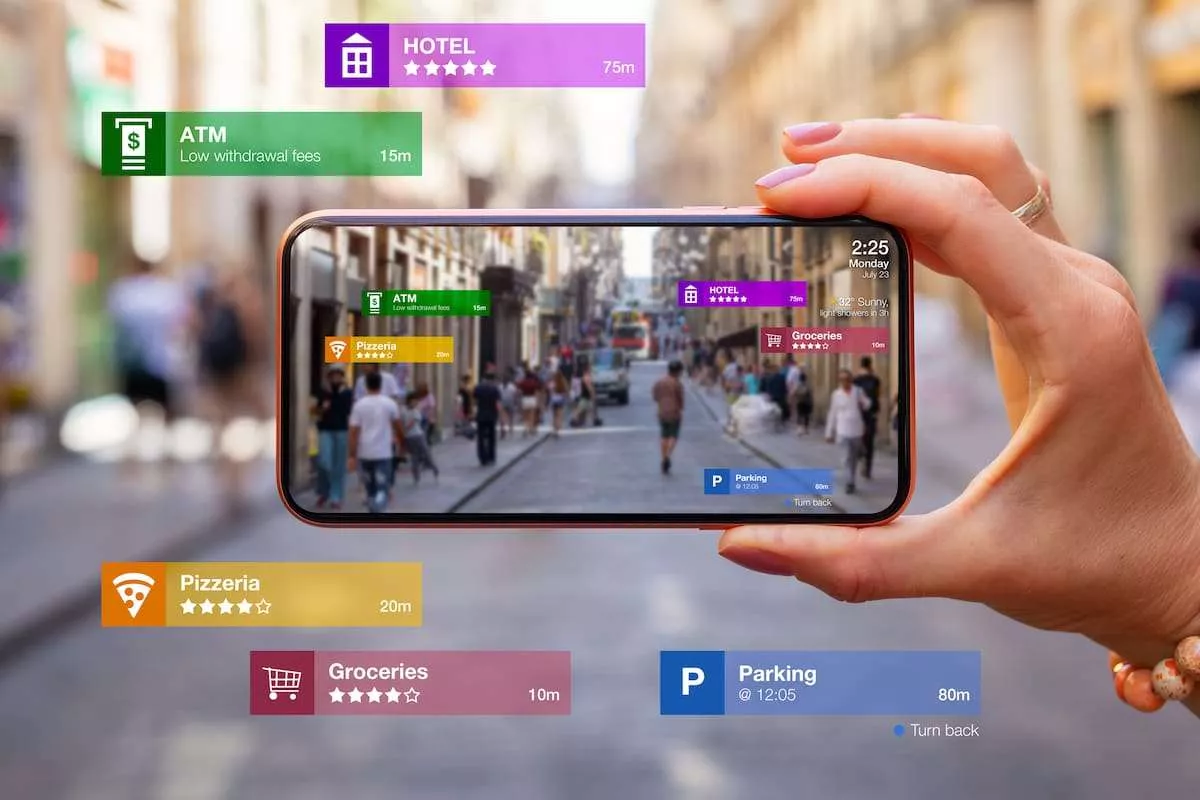Building a container picture from scratch could be time-consuming – so why not construct on other individuals’s work? Open-source registries, similar to DockerHub, RedHat’s Project Quay, Harbor, and others, simplify the process of discovering trusted starting factors. They additionally allow you to automate the administration of your containers by linking connecting repos and initiating computerized rebuilds following source code modifications. Now, by encapsulating each utility of the person into separate containers and deploying them on the same platform, containers guarantee isolation and efficient why is containerization important useful resource allocation. It enables sooner time-to-market, as growth and operations teams work in parallel, eliminating bottlenecks. DevOps enhances the standard of software program releases by automating repetitive duties and decreasing guide errors.
Search Code, Repositories, Customers, Issues, Pull Requests

Containers enable applications to run reliably across totally different computing environments by isolating them from the underlying infrastructure. This allows developers to give attention to LSTM Models writing code without worrying about system configurations or dependencies. Containerization performs a vital role in DevOps, enabling organizations to achieve greater agility and scalability.
Virtualization Vs Containerization: What’s The Difference?
Container engines run on prime of the host OS and virtualize the sources for containerized purposes. An utility, a guest working system, or data storage is isolated from the underlying hardware or software program via virtualization. Multiple digital machines are created on a single bodily system by way of a skinny software layer known as a hypervisor, which mimics the actions and functionalities of the underlying hardware for the abstracted hardware or software. For most techniques and functions, the efficiency of these digital machines is more than sufficient, even when it might not match that of the OS operating on precise hardware. This is as a result of most techniques and applications nonetheless need to make use of or require the underlying hardware totally. Once this reliance is eliminated, digital computers (produced through virtualization) provide users more control, flexibility, and isolation.
- DevOps goals to deliver software program quicker, with larger high quality and reliability, by fostering a tradition of collaboration, automation, and monitoring.
- It permits for packaging of an utility and its dependencies into a container, thereby, helping ease the development and accelerate the deployment of the software.
- DevSecOps instruments assist safety groups by integrating security into continuous integration, steady delivery, and steady deployment pipeline, thus minimizing risks.
- Containerization, although not new to the sphere, is making a bigger impression in IT than ever earlier than.
- By organising CI/CD pipelines, monitoring solutions, and fostering a tradition of collaboration, organizations can accelerate development cycles, improve reliability, and respond swiftly to market demands.
Why Devops: Why Builders Choose Devops Over Different Improvement Fashions
“One factor that was misplaced in creating all of that stability was the flexibility to scale quickly and to change parts of the applying, to pivot what the company does and tackle market tendencies,” Hynes stated. “The means issues are transferring, and the way utility assist works now, I suppose increasingly more engineers are expected to be responsible for their code working day to day,” Hynes informed Built In. That unparalleled portability has made containers the secret weapon of cloud-native tech firms and, more and more, their bigger legacy counterparts. GitHub helps the company’s long-standing efforts to speed up development by breaking down communication obstacles, shortening feedback loops, and automating duties wherever potential. Learn why 90% of the Fortune 100 use GitHub to build, scale, and ship secure software program. Namespaces, then again, let you isolate a quantity of processes from another in a method that a course of will see only what’s contained in the namespace.
What Are Containers And Containerization In Devops?

The rise of containerization within the DevOps landscape has led to the development of numerous tools and platforms that simplify the creation, management, and deployment of containers. Two such widely-used tools that have become integral in containerization are Docker and Kubernetes. These instruments work hand-in-hand to make containerization an efficient answer for contemporary software program growth. Containers share the host working system’s kernel, making them light-weight and less resource-intensive compared to digital machines. This permits DevOps groups to run more containers on the same hardware, thus improving general resource utilization and efficiency.
Also, sometimes you might have to have proper permissions for sure directories and recordsdata. Overall, there are fairly a number of checkboxes you should tick before you probably can successfully run the software. Before we dive into explaining containers in the context of DevOps, let’s first talk about containers themselves.
Normally, any process in a Linux machine can see all other processes operating on the same machine. If you apply process ID namespace isolation to any process, however, that course of will now not see the opposite processes running on the machine. Normally, pretty much anything a process can do (access information, learn and alter registry entries, create links, connect with different processes) is orchestrated within a so-called root scope. But you can create a server silo what’s occurring in a separate, limited scope. Traditionally, to put in and run any software program on any server, you have to meet a number of necessities.
A public cloud can host a monolithic software just as simply as a collection of microservices. Whether builders want to run containerized software by way of on-premises physical machines, private digital machines or public clouds depends on their security, scalability and infrastructure administration wants. Containerization, pushed by tools like Docker and Kubernetes, has become a cornerstone of recent DevOps practices. It empowers organizations to accelerate software delivery, enhance collaboration, and improve the general quality of applications. As expertise evolves, the symbiotic relationship between containerization and DevOps will continue to shape the means forward for software deployment and management.
Application performance monitoring instruments assist organizations track efficiency over time and alert DevOps teams to the issues in order that they’ll proactively handle them. It additionally assists in estimating the usage of assets and thereby helps monitor and handle the tasks successfully. Various DevOps tools, typically from totally different distributors, are available in the market to carry out explicit activities, enabling faster and extra environment friendly product delivery.

So, Docker creates containers, and Kubernetes manages them, particularly at scaling strategy of Devops. Well, it’s not about one being better than the other, it’s about using them collectively for the most effective outcomes. Docker can be utilized to containerize your app, and Kubernetes can be used to handle those containers if you’re working at a scale that needs it. An orchestrator software ultimately goals to attain – automating every aspect of software administration – right from initial placement to deployment, from scaling to health monitoring. Despite each device having completely different methodologies and capabilities to carry out the tasks, the container orchestration system generally follows three basic steps.
Their ease of use tends to lend itself to scaling, and it’s easy for issues to get out of hand. Organizations should promote a culture of transparency, trust, and collaboration to overcome these challenges. Encouraging cross-functional groups and offering coaching and training on DevOps principles can even facilitate smoother adoption. A major one, encountered whereas dealing with containers, is that dealing with container templates packaged by third-party or untrusted sources may be very risky. It’s, due to this fact, better to verify a publicly obtainable template earlier than utilizing it. With the assistance of containerization, IT professionals can reap the advantages of those basic apps for correct utilization of investment in legacy frameworks.
There aren’t any cgroups and namespaces in a Windows kernel, however there are equal mechanisms with the power to restrict processes in a sure method. Virtual file system successfully abstracts the true devices and “translates” each call from a course of to the file system. All these requirements most likely need to be in a specific model and accessible on the particular path.
This is where Docker and Kubernetes, two well-liked containerization technologies, take center stage. Virtual machines emulate a complete working system together with the hardware resources, making them relatively resource-intensive. Each VM runs its personal operating system, called a guest OS, on top of the host OS, utilizing a hypervisor to manage the interplay between the 2. This means that multiple VMs working on the identical host machine have separate cases of the guest OS and share hardware assets allocated by the hypervisor. The handy packaging of containers permits for higher efficiency and performance—even when in comparison with virtual machines (VMs). In a microservices architecture, there’s a one-to-one relationship between each occasion of a microservice and a container.
Transform Your Business With AI Software Development Solutions https://www.globalcloudteam.com/ — be successful, be the first!

